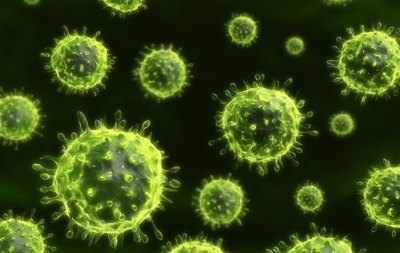First Aid: Infection & Allergic Reactions

Hey, we finally made it to the last lesson in this module, now we can take everything we learned and put it into practice.
Infections and allergic reactions will be just as important as treating any sort of flesh wound. Once the wound is healed, the battle is only half over.
Once you are done make sure and take the test for this lesson as well as the final test that goes over everything you have learned so far.
Important: To get the most out of this first aid course please do not skip ahead. Everything in this course is designed to walk you through the learning process. From understanding your responsibilities and limitations, to what supplies you need and how to use them.
Course Information:
Lesson 6: Allergic Reactions
Video Time: 11:33
Learn about the different causes of allergic reactions in this video.
Allergic Reactions
 So what is an allergic reaction? Basically an allergic reaction is your body over reacting to an allergen. Your immune system is your body’s natural defense system, the immune system protects the body from viruses and bacteria by producing antibodies to fight them.
So what is an allergic reaction? Basically an allergic reaction is your body over reacting to an allergen. Your immune system is your body’s natural defense system, the immune system protects the body from viruses and bacteria by producing antibodies to fight them.
The overreaction of the immune system can cause a rash runny nose itchy eyes trouble breathing nausea and even diarrhea, these are all allergic reactions. The first time you’re exposed to an allergen, an allergic reaction may not occur. For example if you are allergic to peanuts, the first time you eat one you may not see signs of an allergy, however the next time you eat one you might experience mild symptoms like itchy skin or hives, or severe symptoms such as difficulty breathing or a drop in blood pressure.
There are several types of allergies, there are food allergies, pet allergies, seasonal allergies and other allergies such as hayfever, conjunctivitis (pinkeye) and allergies to such things as poison ivy and insect bites.
Types of Allergies
 Food allergies
Food allergies
Milk: Many people are lactose intolerant meaning they have a milk allergy. Avoiding milk or any food that contains milk is the only way to prevent a reaction. Reactions can include wheezing, vomiting and hives
Eggs: Egg allergies are commonly egg whites are more common in children than adults, the reactions range from mild to severe.
Wheat: If you are allergic to wheat the only way to prevent a reaction is to avoid anything with wheat in it. Reactions could include upset stomach, eczema,’s and asthma -like symptoms.
Nuts: Anyone who has an allergy to any sort of nuts knows that they need to completely avoid them. This includes any sort of tree nuts like cashews and walnuts and also includes peanuts or any food with nuts included.
Fish: People can be allergic to different types of fish, if you can figure out which fish you are allergic to you can eliminate that fish from your diet. If you can’t, you will need to remove all fish from your diet.
Shellfish: Some people with a shellfish allergy react to all shellfish; others react to only certain kinds of shellfish. Mild symptoms can include swelling of the lips, wheezing, abdominal pain, dizziness, and tingling of the mouth. While more severe symptoms could include a swollen throat restricting the airway shock or a rapid pulse.
Seasonal allergies
Spring Time: When we think of allergies we usually think of springtime, as the trees and flowers start to bloom the pollen becomes airborne and anyone who suffers from allergies begin sneezing and sniffling.
Summer: Although many allergies start in the spring, these allergies can persist into the summer as well.
Fall: Fall allergy triggers are different than springtime or summer but they can cause just as many symptoms. Yellow weeds like dandelions start releasing pollen in late August and can last into September and even October, about three quarters of people who are allergic to spring plants are also susceptible to fall allergies.
Winter: When we think of winter we don’t usually think about allergies, but allergies can sometimes be confused with the common cold. Winter allergies can include a runny nose that is watery and clear, itchy throat or eyes and the symptoms can persist for weeks. Whereas with a cold, nasal secretions will be discolored you will have chills and body aches and symptoms are usually gone within a week or two.
In the winter you might not have the pollen like you would in the spring or summer but other irritants like pet dander, mildew and mold will be around all year.
Pet Allergies
About 50% of the households in the United States have a dog or cat in them, but you don’t need to own a dog or a cat to be affected by pet allergies.
The pet’s actual hair is not the allergen, but it can collect dander and harbor other allergens like dust or pollen. Dogs and cats can also secrete fluids and shed dander that contains these allergens. These allergens might not lose their strength for several months and can adhere to walls clothing and other surfaces.
Other allergies: Other allergies include pinkeye, hives, allergies to poison ivy, allergies to insect stings and bites and mold allergies, allergies to certain drugs and allergies to certain cosmetics.
In the context of first aid it is important to understand as much as we can about the victim and this includes the allergies. By understanding what this person might be allergic to we can minimize the chances of doing more harm than good.
By understanding what a person might be allergic to, we might be better able to assess the situation and understand what is affecting the person requiring first aid.
Vital Signs & Taking a Pulse
Course Information:
Lesson 6: Infections
Video Time: 11:25
In this video you will learn about all of the different types of infections...even the ones you probably didn't even think about.
 In the medical dictionary the definition of infection is the invasion and multiplication of microorganisms such as bacteria, viruses, and parasites that are not normally present in the body.
In the medical dictionary the definition of infection is the invasion and multiplication of microorganisms such as bacteria, viruses, and parasites that are not normally present in the body.
An infection may cause no symptoms and be subclinical, or it may be clinically apparent and cause symptoms. An infection can remain localized, or it can spread through the blood and become systemic (body Wide.) Microorganisms that live naturally in the body are not considered infections, they are considered normal flora, such as bacteria in the mouth or the intestines.
How does infection occur?
Microorganisms that can cause illness are around us everywhere, in food, in water, in the air and even in the bodies of animals and other people.
Infections are caused by exposure to living or organisms that are not normally present in our body. Exposure to infectious organisms happens in many different ways including such as through the skin, through the lungs or the mouth. These infectious organisms can come from feces, water, insects, infected or dead animals (including humans) and many other things.
As prepper’s our main concerns are probably going to be infections from drinking water, food, infections from wounds or infections from unsanitary conditions. To keep ourselves as protected as possible it’s important to understand what these infectious organisms do, so we can understand how to treat them.
There are four main types of germs that can cause infections, these include bacterial infections, viruses, fungi and parasite (protozoa.)
Bacterial Infections
Bacteria are tiny and single celled organisms that cannot be seen by the human eye. Some bacteria cause tissue reactions that produce pus or other harmful or poisonous waste products. If not properly treated these harmful bacteria could enter the bloodstream causing toxemia or sepsis which is basically poisoning of the blood.
Not all bacteria is bad, good levels of bacteria on our skin are what are referred to as normal flora, we all have staff or strep bacteria but normal flora is when these bacteria work in harmony with the other bacteria on our bodies. This becomes an infection when outside germs are introduced or these normal bacteria begin to multiply out of control.
Viral Infections
Viral infections are similar to bacterial infections because both types of infections are caused by microbes, bacteria and viruses can be spread by such things as coughing, contact with infected people or animals, contact with contaminated surfaces, eating or drinking bad food or water or infected insects like fleas, ticks or mosquitos.
The difference between a bacterial infection and a viral infection is that a bacterial infection can live on it's own, a virus needs a host to survive. Antibiotics are also useless against viral infections.
Viral bacteria or infections include such things as the common cold, the bubonic plague, AIDS and HIV and Ebola which has become a bigger issue lately. With the way the world is today, and how easily it is to travel from one country to another the chances of a viral outbreak are better than ever.
Fungi Infections (Fungus)
If you’ve ever had athlete’s foot are possibly a yeast infection than you and you know exactly what a fungal infection is. Fungi live in the air, in the soil, on plants and even in the water. Only about half the types of a fungus are harmful, but it’s really difficult to tell which ones are good, and which ones are bad.
Some fungi reproduce through tiny spores in the air, meaning we can either inhale these or they can land on us. Because of this fungal infections start on the skin or in the lungs most of the time. People with weakened immune systems are also more prone to fungal infections.
A fungal infection can be difficult to kill and take a long time to do so. For a skin or nail infection you might need to apply medicine directly to the infected area, for a lung infection you might need to take medication.
Parasitic Infections
A parasitic or protozoan infection is one were most likely already aware of, you know likely have probably read 100 different articles about Cryptosporidium and Giardia. A protozoan infection is caused by a single celled parasite living in the body and multiplying. Protozoa can either enter the body through the skin or through the mouth, protozoa the entry through the mouth usually do so by consuming unclean drinking water or food. Protozoa that enter through the skin usually do so from an insect bite.
Parasitic infections include a protozoa, Helminths and ectoparasites. Helminths are wormlike organisms generally visible to the naked eye, in the early stages these have the ability to multiply in the human body, but not in their adult form. These can live in the gastrointestinal tract, the blood, the lymphatic system or subcutaneous tissues.
Ectoparasites include ticks, fleas, lice and mosquitoes. While parasitic infections are more common in the tropics they can be prevalent in temperate climates as well. Malaria is a good example of this, malaria causes 600 Thousand deaths globally each year. Other diseases carried by mosquitoes include the West Nile virus, dengue fever and dog heartworm.
Protozoa are microscopic and thrive on moisture. Diseases often spread through dirty drinking water some protozoa can cause intestinal infections that lead to diarrhea, nausea and stomach pain. Some protozoa found in water include Cryptosporidium and Giardia. The severity of the symptoms depends on the concentration of the protozoa.
Protozoan infections from such things as dirty drinking water are widespread in areas with inadequate sanitation and water treatment. They are also common in settings where fecal incontinence and poor hygiene are prevalent. This is why you always hear about not drinking water that animals use because it could contain these protozoa from their fecal matter.
In a later module we are to go over how to treat some of these infections, some antibiotics that you might need and what they do, and how to prevent the onset of infection in the first place.
It is important though to understand what these infections are before we can begin to understand what the treatments might be.
Vital Signs – Body Temperature
Normal body temperature can range from 97 degrees Fahrenheit to 99 degrees Fahrenheit. This can be done with a thermometer a few different ways, orally, rectally or under the arm. But sometimes a thermometer might not be an option.
The most common way to check for a fever without a thermometer is to feel the person's forehead or neck to see if it feels hotter than usual. Use either the back of your hand or your lips, since the skin on your palm isn't as sensitive as these other areas.
Documentation and Record Keeping
If we are in a situation where someone needs our help, documentation might be the last thing on our mind. But it can’t be overstated how important this is. If someone else were to come along to help out, or you were able to get the victim to proper help, the more information you can give the better.
One acronym you should try to remember is SBAR. This stands for: Situation - Background - Assessment - Recommendations. This is to get as much information as you can for emergency personnel or anyone who comes along later with more medical experience.
While there is no set way to document a patient, there is a suggested guide based around basic abbreviations used in the medical world today. Here are a few of them so you don’t need to write them all out.
PC: Presenting complaint – what is the problem? Why has the patient sought medical attention?
HPC: History of Presenting Complaint – when did the problem start? Have you had it before? What events led up to the problem occurring?
O/A: On Arrival – what did you find when you arrived at the scene (not always applicable)
O/E: On Examination – what did you find when you examined / looked at the patient?
PMH: Past (relevant) Medical History
Meds: Medication (past and present)
Allergies: Any known allergies?
Imp: Your impression of the patient / problem – suspected diagnosis
Tx: Specific treatment carried out by you
Plan: What’s the plan for this patient? Handover? Transport?
Pt: Patient
LoC: loss of consciousness
MoI: Mechanism of Injury
D&V: Diarrhea and vomiting
SoB: Short of breath
DiB: Difficulty in breathing
It’s not imperative to memorize all of these abbreviations, but it might help when time is of the essence.
Training & Resources
For a huge list of medical terms and abbreviations download the PDF below.
Get Started...
Congratulations! Module 1 is complete. Make sure and take the final exam before you move on to module 2.
Course Home
Click the button to return to the main course page with the list of all the modules in the first aid course.
DISCLAIMER: THIS WEBSITE DOES NOT PROVIDE MEDICAL ADVICE
The information, including but not limited to, text, graphics, images and other material contained on this website are for informational purposes only. The purpose of this website is to promote broad consumer understanding and knowledge of various health topics. It is not intended to be a substitute for professional medical advice, diagnosis or treatment. Always seek the advice of your physician or other qualified health care provider with any questions you may have regarding a medical condition or treatment and before undertaking a new health care regimen, and never disregard professional medical advice or delay in seeking it because of something you have read on this website.








